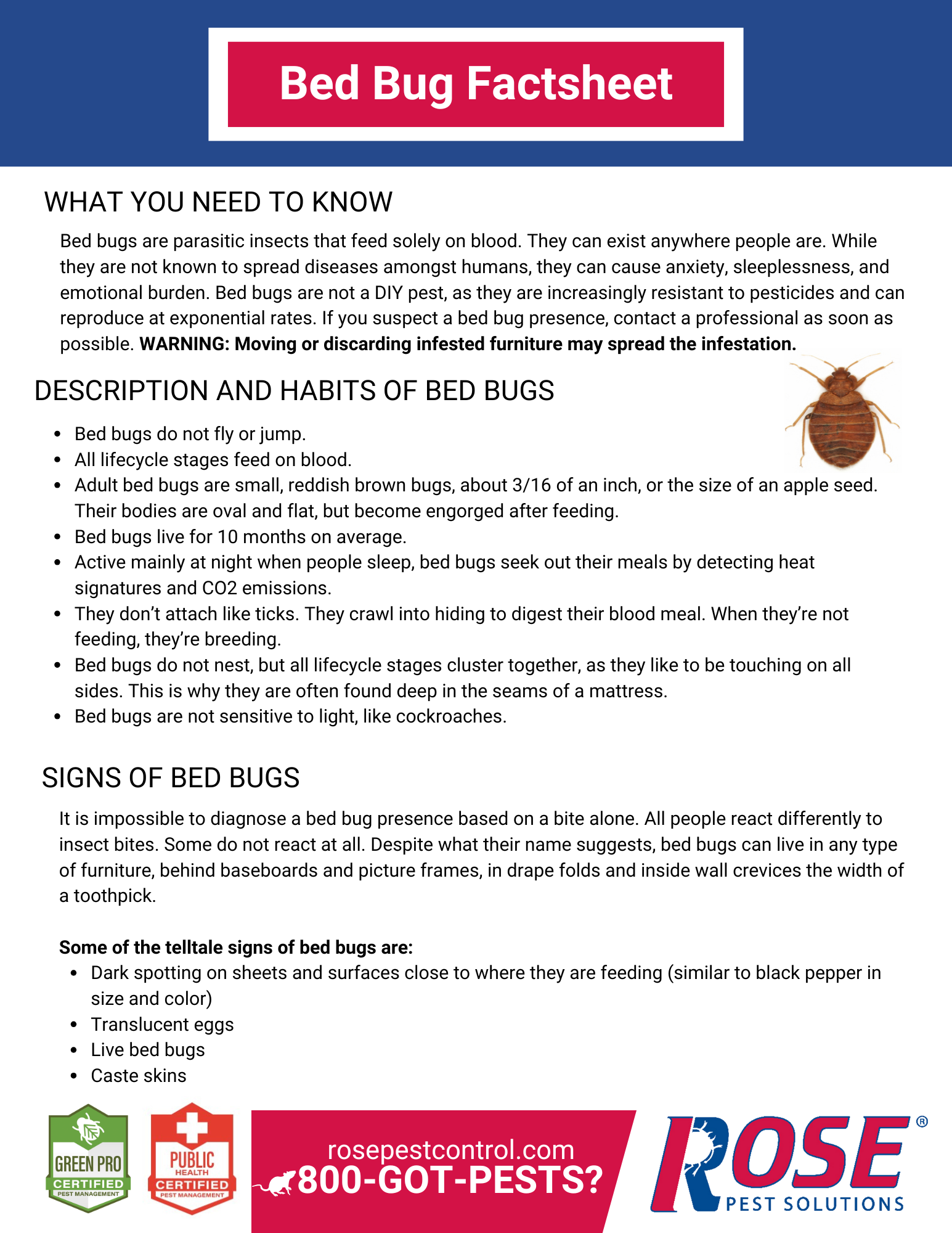Bed Bug Services - Truths
Table of ContentsBed Bug Services Fundamentals ExplainedThe Only Guide for Bed Bug ServicesEverything about Bed Bug ServicesBed Bug Services - Questions
A professional bed bug inspection is much more than a simple walkthrough and relies on expertise. Bed bugs are difficult-to-detect, fast-moving pests that seek cracks, crevices, and furniture seams. Because of their hidden habits, detailed examination is necessary to identify the full scope of the problem. Professional inspectors use a combination of tools, procedures, and knowledge to locate pests effectively, preventing spread and further infestation.The first step in a proper inspection involves knowing the habits and life cycle of bed bugs. Bed bugs belong to the Hemiptera group and experience multiple nymph stages before reaching adulthood. Adults are oval, flat, reddish-brown insects that lack wings and have long legs and antennae. Their feeding apparatus injects anticoagulants while drawing blood, producing skin irritation and visible marks. Knowing these traits guides professionals in locating infestations.
Early detection is essential for effective management. Professionals look for specific indicators such as fresh droppings that resemble small ink dots, old stains, shed skins, eggs, or eggshells (Bed Bug Services). Female bed bugs are capable of laying hundreds of eggs, leading to rapid infestations if unchecked. Evidence of discarded skins and eggs shows that the infestation is current and requires prompt inspection
Preparing for an inspection demands meticulous preparation. Inspectors often suggest tidying up spaces to allow full access, which improves access to furniture and baseboards. Bedding and linens may be treated with heat before inspection, and then secured until the inspection is complete. Wall decor, mirrors, and pictures should be taken down to check hiding places. Vacuuming furniture and floors can remove loose pests, and vacuum bags should be disposed of immediately outside.
The Of Bed Bug Services
The inspection itself is systematic and thorough. Inspectors examine mattresses, bed frames, and headboards, looking closely at creases, joints, and folds. Upholstered furniture, including seating furniture, is carefully examined, with attention to seams and cushions. Baseboards, moldings, the edges of wall-to-wall carpeting, electrical outlets, closets, and storage areas are also included in the inspection, as these can be key areas for infestation.
Specialized tools help inspectors find hidden additional reading pests. Flashlights, magnifying lenses, multi-tools, and mirrors allow examination of tight spaces. Monitoring devices like interceptor traps or sticky pads help track bed bug activity over time. Some companies use detection dogs, which accurately identify read this active infestations, distinguishing them from old evidence.
.png?r=RGXqEV3/M/U=)
Meticulous documentation is a key component. Inspectors document all signs, infestation levels, and suggested measures. This ensures accountability and offers proof of inspection. Residents are often asked to avoid disturbing potential infestation signs, as this prevents loss of critical information.
After inspection, a monitoring plan may be recommended to verify infestations and observe trends. Continuous monitoring identifies surviving insects after treatment, and collecting feedback from occupants supplements physical inspection. Cooperation from residents supports the inspection process.
Not known Details About Bed Bug Services

Professional inspections provide confidence that infestations are correctly identified. Trained inspectors know what to look for and where, prevent misdiagnosis, and provide certainty.
Bed bug inspections are particularly important in places where infestations spread easily. Inspectors assess all connected areas to confirm complete assessment (Bed Bug Services). This prevents escalation and reduces treatment costs
In summary, a professional bed bug inspection involves understanding bed bug biology, preparing the space, conducting systematic inspections, using specialized tools, documenting findings, and implementing monitoring protocols. Each step contributes to accurate detection, effective treatment planning, and click here to find out more long-term prevention.
The Ultimate Guide To Bed Bug Services
